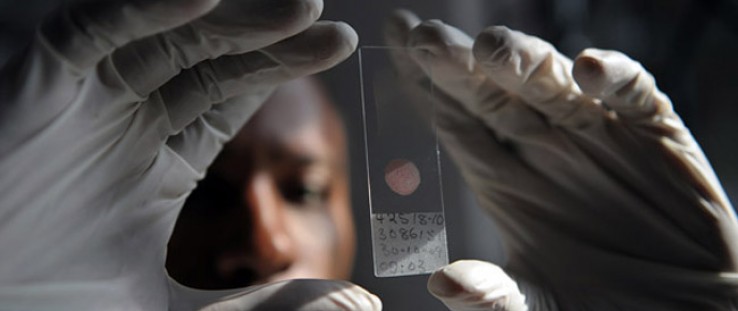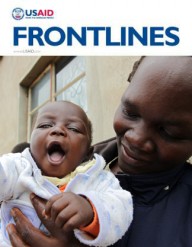 A laboratory technician prepares a sample for genotyping at the government-run Ifakara Health Institute in Bagamoyo, Tanzania, when a pioneering vaccine against malaria was in its third phase of testing in October 2009.
Tony Karumba, AFP
A laboratory technician prepares a sample for genotyping at the government-run Ifakara Health Institute in Bagamoyo, Tanzania, when a pioneering vaccine against malaria was in its third phase of testing in October 2009.
Tony Karumba, AFP
 A laboratory technician prepares a sample for genotyping at the government-run Ifakara Health Institute in Bagamoyo, Tanzania, when a pioneering vaccine against malaria was in its third phase of testing in October 2009.
Tony Karumba, AFP
A laboratory technician prepares a sample for genotyping at the government-run Ifakara Health Institute in Bagamoyo, Tanzania, when a pioneering vaccine against malaria was in its third phase of testing in October 2009.
Tony Karumba, AFP
In 1977, movie goers were introduced to Luke Skywalker and Darth Vader, and the plaid leisure suit was the height of fashion for the well-dressed urban male. It was also the year of the last known case of smallpox—in the East African country of Somalia.
Unlike any other event that year, the eradication of smallpox from the planet showed that a singular breakthrough and a vast public campaign can go up against daunting odds in even the least developed nations to create a truly global triumph.
USAID, along with other U.S. Government health agencies and international health organizations, was behind the global program to eliminate smallpox and bring the power of life saving vaccines to millions of the world’s poor.
The Agency is continuing to strengthen vaccination programs and is supporting scientists and researchers who are trying to find the latest miracle shot that will make today’s most deadly and burdensome diseases a distant memory.
“The most transformative new breakthroughs we have at our disposal are … vaccines,” said USAID Administrator Rajiv Shah, speaking earlier this year at the National Institutes of Health, the United States’ premier collection of Government-funded health research facilities.
“By expanding the coverage of existing vaccines and introducing new immunizations, we believe we can save the lives of 4 million children over just the next five years,” Shah said.
Breakthroughs like vaccines against smallpox and polio brought with them “massive progress in global health,” he added, with millions of children saved from the life-ending and debilitating disease that claimed their parents and other older relatives. “Vaccines are the best public health investment we can make,” Shah said.
Immunization is considered critically important to reducing child mortality, the fourth of eight Millennium Development Goals that much of the world has pledged to meet by 2015.
Yet, vaccine-preventable diseases are still estimated to cause more than 2 million deaths every year in developing countries. Unlike in richer countries, where vaccination is a scripted part of life for young children, immunizations in some poorer countries are still far from routine.
The new initiative aims to increase the number of vaccinations that USAID supports and to expand immunization programs to reach more children, saving an estimated 4 million lives.
“Going forward, we see this as one of our top priority areas where we can have an impact,” Amie Batson, deputy assistant administrator in the Bureau for Global Health, said.
“We will be putting together a vaccine team. We will work with civil society to put in place systems—PDPs (product development partnerships) that exist, like IAVI (International AIDS Vaccine Initiative) and MVI (the Malaria Vaccine Initiative), and working more closely with GAVI. We’ll be looking to see how we can increase our investments,” she added.
In his speech, Shah also said USAID’s renewed support for vaccines would have a special focus in the field. “Each of our missions around the world will identify opportunities to improve cold chain and delivery systems. And we will support countries in developing aggressive new plans to introduce rotavirus, pneumococcus, and meningococcus vaccines,” he said.
Looking Back
For four decades, USAID has worked with partners to confront the challenge of vaccine-preventable diseases and help immunize children in remote parts of the world.
“In the 1970s, immunization coverage of the basic [childhood] vaccines was estimated below 10 percent. By 1990, it had climbed to 70 percent, and today it is estimated at around 79 percent,” said Murray Trostle, senior public health adviser in the Office of Health, Infectious Disease and Nutrition, part of USAID’s Bureau for Global Health.
“That,” he explained, “represents a massive effort to build an immunization-delivery system that can store and transport delicate vaccines at the proper temperatures in difficult climates; train health-care workers in the correct procedures for administering vaccinations; educate mothers and fathers about the value of immunization; maintain multiple contacts with the child during the first year of life; and properly manage potentially dangerous waste material following vaccination.
“Without that delivery system, vaccines are just unfulfilled promises.”
Investment in Innovation
Past USAID investments led to products that now reach millions. That includes safe injection technologies like the SoloShot™ syringe that is automatically disabled after one use and cannot be refilled or reused. That, in turn, prevents transmission of blood-borne diseases that can result from reuse or improper sterilization of a contaminated needle or syringe. It is especially important in rural settings where modern sterilization equipment and the power to run it can be scarce or nonexistent. Studies show that blood-borne diseases due to dirty needles are reduced by 90 percent in programs using some form of auto-disable syringes such as SoloShot™.
Since 1992, more than 1 billion SoloShot™ syringes have been supplied to public health programs in more than 40 countries in Africa, Asia, Eastern Europe, and Latin America. UNICEF—which already has distributed hundreds of millions of auto-disable syringes to immunization programs—now provides only these kinds of syringes to countries requesting them.
USAID also supported the Uniject device—a combined needle and syringe that comes pre-filled with vaccine or an injectable medicine—that can only be used once, also preventing transmission of blood-borne diseases. Uniject has been used for childhood vaccination as well as for programs to protect maternal and newborn health.
In addition, USAID provided backing to developers of a small label that is affixed to vaccine containers that changes color to indicate if the product inside has been damaged by heat exposure, which can easily happen in developing countries located in warmer climates.
In the past, because there was no way to detect whether individual vials had been exposed to heat at some point during storage or transport, national immunization programs disposed of large quantities of suspect vaccines. “These vaccine vial monitors permit program managers to better manage vaccine supplies and reduce vaccine wastage due to heat exposure,” said Trostle.
The Program for Appropriate Technology in Health, better known by its acronym PATH, which led the charge developing both SoloShot™ and vaccine vial monitors with USAID support in the 1980s, estimates that over the next decade, vaccine vial monitors will allow health workers to recognize and replace more than 230 million doses of inactive vaccine and to deliver 1.4 billion more doses in remote settings—actions that could save more than 140,000 lives.
Slow Gains
New technology worked alongside the less sexy work of building health systems, often from scratch, over several years’ time starting in the 1970s. Most developing countries had no basic systems or infrastructure on which to build an immunization program in the beginning.
“In these countries the immunization program helped build the primary health-care program, instead of the other way around,” Trostle said.
“The challenge now is reaching the very hard to reach populations and sustaining the gains that we have made overall,” he added.
GAVI, the Global Alliance for Vaccines and Immunization, is holding a pledging conference June 13 in London, gathering donor countries and vaccine makers to talk over ways to raise an additional $3.7 billion the group says is needed to immunize more than 240 million additional children in the next five years, saving 4 million lives. USAID is but one partner in GAVI, contributing $644 million over 10 years.
It is but one try at innovative financing to continue vaccination efforts, which is considered crucial in efforts to reach ambitious global health goals in a resource-constrained world.
An Ongoing Challenge
Unlike the success with smallpox, experts see vaccinations as an ongoing battle, with new disease threats emerging and the need for newer and better drugs and technologies to go against them.
Trostle, for example, predicts the next decades will bring everything from advances that keep vaccines stable at room temperature (vaccines currently have to be kept cool, a challenge where electricity is unreliable or non-existent) to more oral vaccines and fewer injections. But none of the advances, he and others say, are likely to come easy.
“Coverage rates have quadrupled and we are using vaccines today that we barely dreamed of 30 years ago,” he said. “We have made great strides because we recognized that immunization was a complex system that started in a research lab and ended in a child’s arm.”
Added Global Health’s Batson: “Vaccines exemplify some of the best of the United States. We play a leading role in science ... with the NIH, universities, the biotech industry, and the vaccine industry itself.… The benefit that I feel for my daughter is the same benefit to a woman in rural Africa. Because of that, her child is as equally protected as mine.”
This article originally appeared in April 2011









Comment
Make a general inquiry or suggest an improvement.